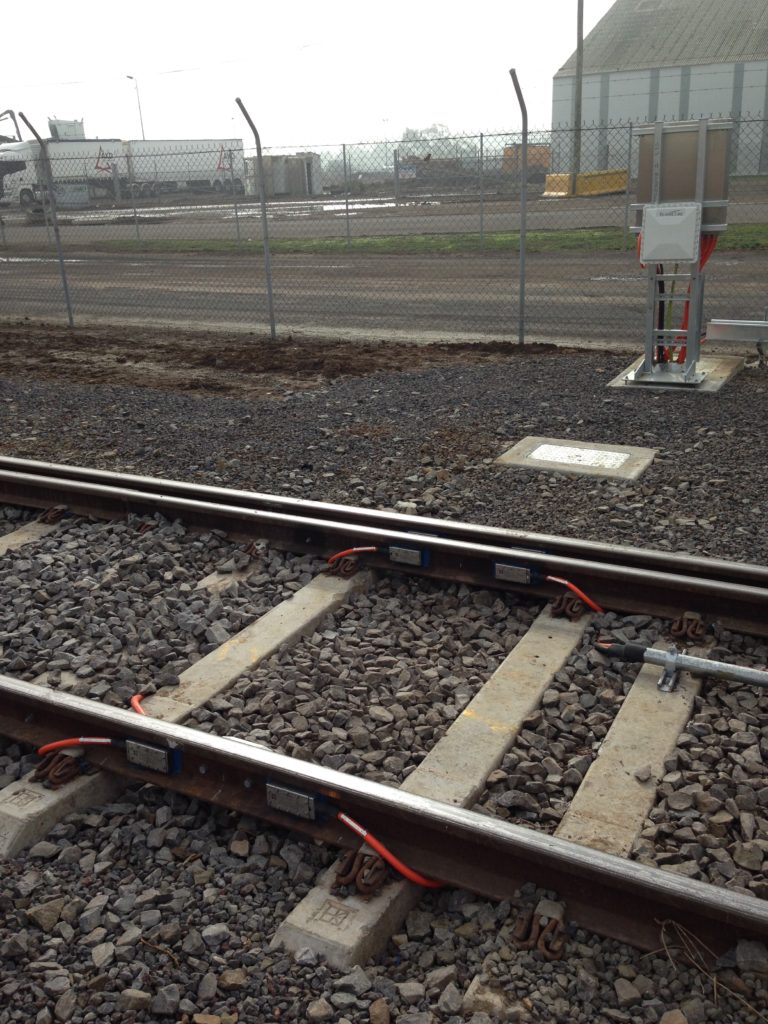GrainCorp’s Geelong Port train unloading facility was the site of a rather complex project: the Meridian solution had to address a dual gauge track consisting of standard gauge and broad gauge, meaning there were three rails on the track. Net weight reports are required along the Geelong system, so weighing points are located before and after the unloading shed (thus giving a gross and tare weight, respectively). The weighbridge accepts trains from a single direction and includes a static RFID station at the gross weighing point, for identifying wagons. Both weighing points employ an ME-Trackweigh 2D system, which means each wheel is weighed twice and the average result is used. This gives the system a better likelihood of achieving class 0.5 train weighing and class 1 wagon weighing results, an improvement over the standard ME-Trackweigh 1D system.
Trains are expected to traverse the weighbridge at speeds below 10km/h to obtain accurate weights, however the system is able to handle upwards of 50km/h, without missing data, according to the engineer.
As the Geelong system has both standard and broad gauge rail, 50% more rail mounted hardware was required to capture all trains than in a single gauge rail system. Additional hardware and software was allocated to automatically handle the third rail. A report is produced automatically at the end of each train, regardless of which rail gauge it is travelling on. A NextG access point facilitates the distribution of reports and allows remote access to monitor the weighbridges.
Operators inside the unloading control room are provided with a SCADA interface allowing them to observe in real time train activity over the weighbridge. The weighbridges are configured in automatic mode, and require no operator input.









